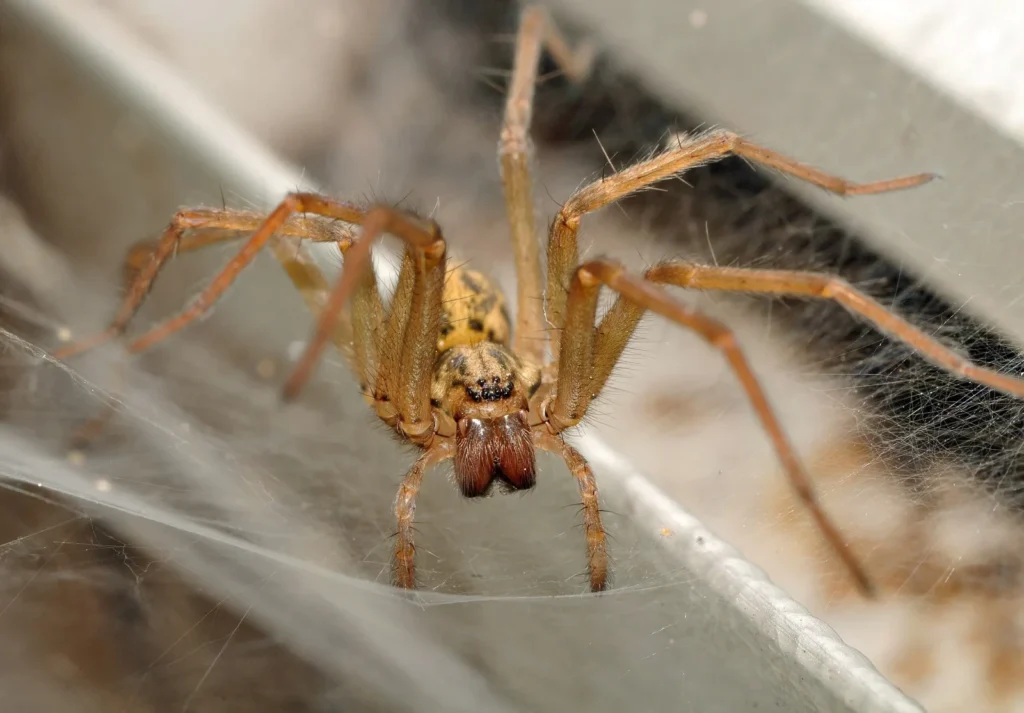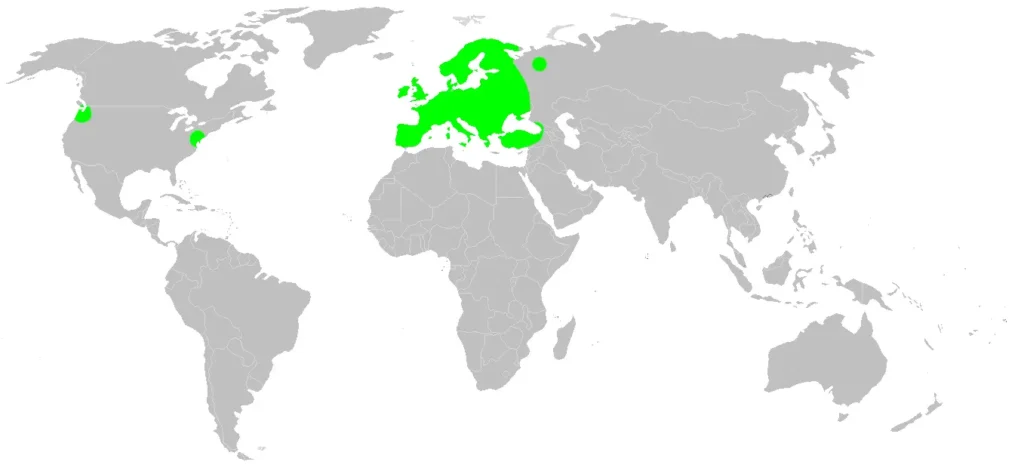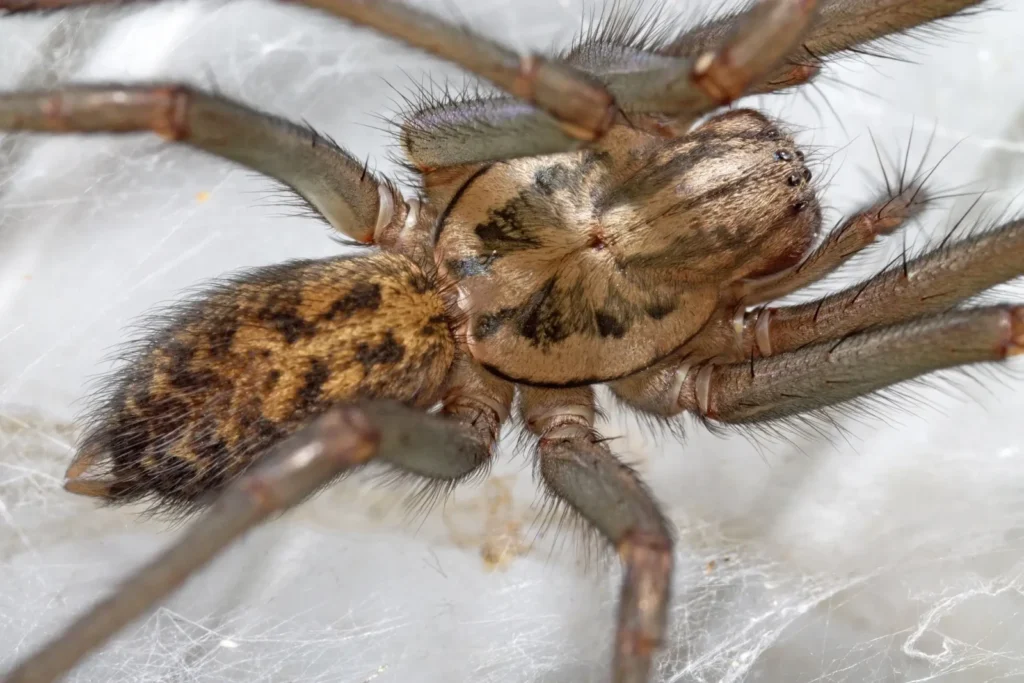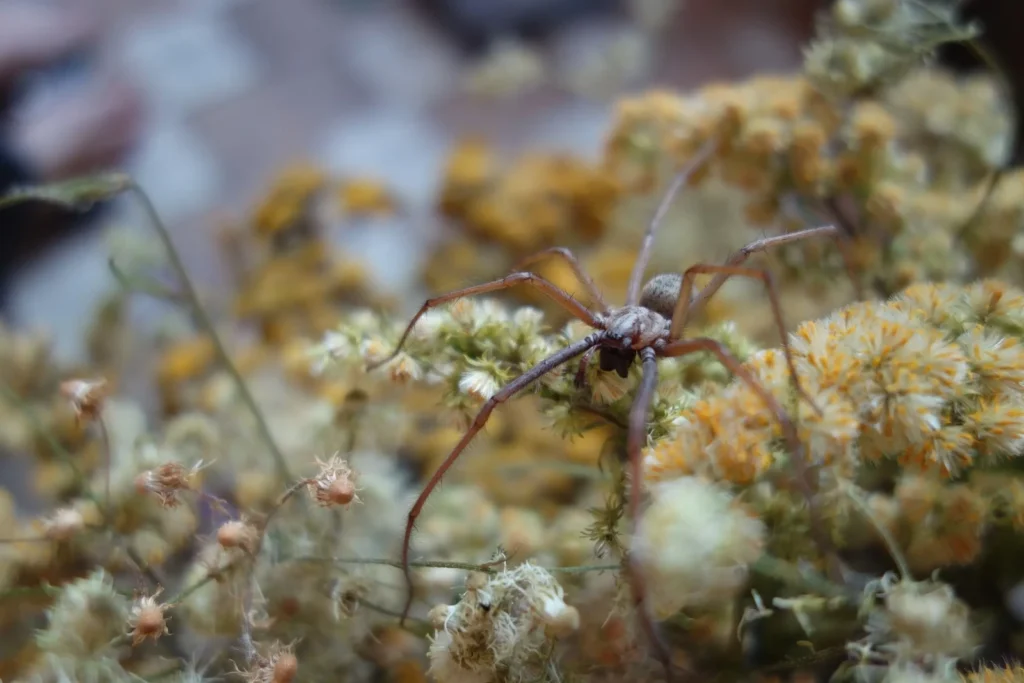Large house spider (Eratigena atrica), also known as giant mouse spider or house spider, is one of the largest spiders found in human dwellings. Its long legs and dark color may scare those who are afraid of spiders, but it is actually a valuable ally in the fight against insect pests.
📌 Why is this spider interesting?
✔ One of the largest spiders in Europe and North America
✔ Known for its incredible speed
✔ Does not weave a round web, but builds a “funnel-shaped” den
✔ Feeds on flies, mosquitoes, cockroaches and other pests
✔ Although it looks scary, its bite is not dangerous to humans.
Let's learn more about this unusual spider, which often becomes an uninvited guest in our homes!

Scientific classification
✔ The Kingdom: Animals (Animalia)
✔ Type: Arthropods (Arthropoda)
✔ Class: Arachnids (Arachnida)
✔ Row: Pavuk (Araneae)
✔ Family: Voronkoplet spiders (Agelenidae)
✔ Gender: The origin
✔ View: Eratigena atrica
📌 This spider was previously classified in the genus Tegenaria, but was later placed in the new genus Eratigena.
Appearance
🕷 What does a large house spider look like?
✔ Body size:
• Females: 10-18 mm
• Males: 7-15 mm
✔ Paw span: up to 7.5 cm
✔ Colour: dark brown or grayish with a spotted pattern
✔ Body: elongated, with small hairs
✔ Paws: long, covered with small bristles
✔ Oko: 8 eyes arranged in two rows
📌 This spider may seem much larger because of its long legs!

Distribution area and habitat
🌍 Where does the large house spider live?
✔ Europe: almost across the continent
✔ Asia: temperate climate zone
✔ North America: imported to the USA and Canada
✔ Australia: found in some regions
📌 It can be found in forests, caves, basements, barns, old buildings, and even in modern homes!
Lifestyle and behavior
🌿 How does this spider behave?
✔ Leads a nocturnal lifestyle – hides in its shelter during the day
✔ Builds a funnel-shaped web, which serves as an insect trap
✔ Very fast runnerwhich helps it avoid predators
✔ Lives mostly as a recluse, although there may be many individuals in buildings
📌 This spider is not aggressive and tries to avoid people!

Features of the web
🕸 How does a large house spider use its web?
✔ Builds funnel-shaped nest, the entrance to which leads to a deep shelter
✔ Does not use webs for active hunting, but waits for a victim to get tangled in the threads
✔ Spider webs have sticky properties.which helps keep insects away
📌 Large house spiders can live in the same web for several years!
Food
🍽 What does a large house spider eat?
✔ Flies, mosquitoes, moths, cockroaches, small spiders
✔ Sometimes even small scorpions and other invertebrates
✔ May leave food reserves in its den
📌 These spiders are natural “sanitaries,” helping to control the insect population in homes!
Reproduction
❤️ How do these spiders reproduce?
✔ Males seek females in September-October., after which they often remain to live in their nest
✔ The female lays eggs in a cocoon.who hides in his nest
✔ The little spiders hatch after 2–3 weeks.
✔ Young spiders quickly leave their mother's nest, settling in new places.
📌 Males often die or become victims of other spiders after mating.

Is it dangerous for humans?
🚨 Does a large house spider bite?
✔ Yes, but rarely – only in case of self-defense
✔ The bite may cause mild burning and redness.
✔ The poison is not dangerous to humans.
📌 These spiders prefer to run away than attack!
Interesting facts
💡 It can run at speeds of up to 0.5 m/s – one of the fastest spiders in the world!
💡 Often confused with the poisonous “hermit spider,” but they have nothing in common!
💡 It can live up to 3 years – that’s a long time for spiders!
💡 Males are more likely to come into human sight as they seek out females during mating season!
How to get rid of spiders in the house?
🛑 If you don't want to see these spiders in your home, follow these simple rules:
✔ Keep the room clean., especially basements, attics and storerooms
✔ Install screens on windows and doors
✔ Vacuum the corners of rooms and other dark places regularly.
✔ Use natural repellents, such as peppermint or citrus essential oils
📌 However, remember that these spiders are natural insect hunters and are beneficial!
Conclusion
🕷 The large house spider is not a scary monster, but a beneficial resident that helps reduce the number of insect pests in our homes! Despite its eerie appearance, it is completely non-aggressive and poses no threat to humans.
🌿 If you encounter such a spider in your home, perhaps instead of chasing it away, you should leave it alone – after all, it is your natural protector against insects!